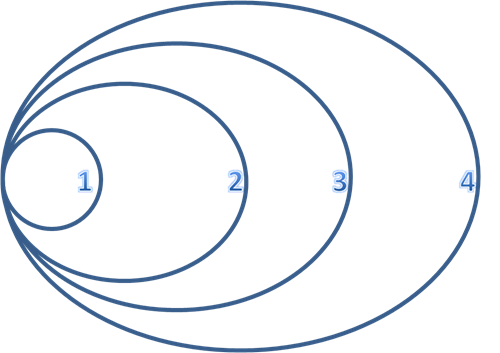By
Michael Pace
|
Date Published: February 17, 2014 - Last Updated August 22, 2018
|
Comments
“Life is like a snowball. The important thing is finding wet snow and a really long hill.” – Warren Buffett

It is such a perfect simile. We’ve all had those moments, for good or for not-so-good, when our actions build upon the previous, and create either a gloriously round snowman body or a boulder blocking our driveway. Hopefully, you are having more of the positive experiences. I love the simile because it conjures such a clear visual example of creating virtuous cycles. They are not always perfectly linear, grow based on the force/momentum, conditions, and the overall landscape, and need time to mature. As I approach developing customer service experiences, I am always trying to identify the opportunities for virtuous cycles.
What is a virtuous cycle? Dictionary.com describes it as “a beneficial cycle of events or incidents, each having a positive effect on the next”. Usually in the business world, this is expressed by a boring PowerPoint Smart Art of arrows going in a continuous circle. We have all seen it, nobody is impressed. In actuality, virtuous cycles are really like snowballs; with each revolution the circle grows and compounds for the next revolution. While this appears to be a great post on how to build a snowman, let me bring us back to how virtuous cycles great amazing and profitable customer experiences. Let’s start with a digital example:

Moment 1: Customer tweets to your handle or mentions your brand with a question.
Moment 2: Customer Service responds to the tweet, with a link to Knowledge Base.
Moment 3: Since this a fairly frequent question, you post the tweet and response on your blog or community site.
Moment 4: Customer Service “proactive” tweet with a link to your support blog and/or community site, “Wondering how to do XXXXXX, so was one of our customers, see how <link>”.
Now, what just happened with this example?
- Customer is acknowledged on Twitter, hopefully within a beyond customer expectation turnaround time (2-10 minutes). Both acknowledgement and response time are as important as providing the correct answer in social customer service.
- Customer is provided an answer linked to your Customer Knowledge Base. Not only does this provide an answer to your customer’s question, it builds awareness that answers are available in another digital format. If this is a public tweet, not a Direct Message (DM) or began with the “@” symbol, any follower can learn from your other customer.
- Believe it or not, you are now in possession of valuable content. You have a customer’s voice, an answer to the question, and awareness to alternate forums. By posting this content to your community or blog site, you have created “searchable” customer support content.
- By posting the community or blog site link, you now have created proactive content for customers who may search for their answer via a search engine (Google, Yahoo, etc…) and provided help content on your site.
Even if just steps 1 and 2 occurred, you still created a bigger snowball or virtuous cycle of customer support between your Twitter community and your Knowledge Base. If moving to steps 3 and 4 produce a sense of fear or out of your current scope of work, you are correct. But I believe it’s the role of Customer Service and the tools they use that is changing, and so should Customer Service leaders.
This may sound similar to previous Customer Service tactics, such as while your customers are on hold waiting for a service representative, you let them know they can also get answers from your website. The intention in this message is to reduce or deflect call volume by creating awareness of your website. People and customers all hate this. They probably called for a reason. This tactic actually creates a vicious cycle, where the message angers callers on hold, and typically creates a longer call. Virtuous cycles create value for all parties involved. Virtuous cycles do not interrupt. In the example above, the customer received their answer in the forum, format, or medium the customer chose.
If you wanted to introduce them to your website, use a follow up email post or even during the interaction with the customer on the phone. Let the customer know you will be sending them a link if they ever need this information again, a quick simple place they can find it.
Other examples where virtuous cycles can be created:
- Providing your Twitter or other social links on your mobile app
- Including Knowledge Base information or search functionality on your mobile app
- Using company blogs or SHORT whitepapers to educate or coach your customer post a transaction, but only if it is relevant to the conversation
- Invite customers to your communities (in person, via email, over the phone, etc…) – only after the transaction has been completed
- Using Chat functionality to link to your Knowledge Base (but also provide a in simple written form while in the chat
- If you have a Customer Success program, make sure you have virtuous cycles imbedded in your processes
Virtuous cycles create exponential value for both your company and the customer. If done well, you may also begin helping customers who you will never hear from, because they have helped themselves. And if done really well, those customers will also share their new insights. Then the snowball starts getting bigger and faster. Your infrastructure and processes are the hill, and your helping the customer is the first small ball. Find your virtuous cycles, create momentum, and get rolling.
More Resources